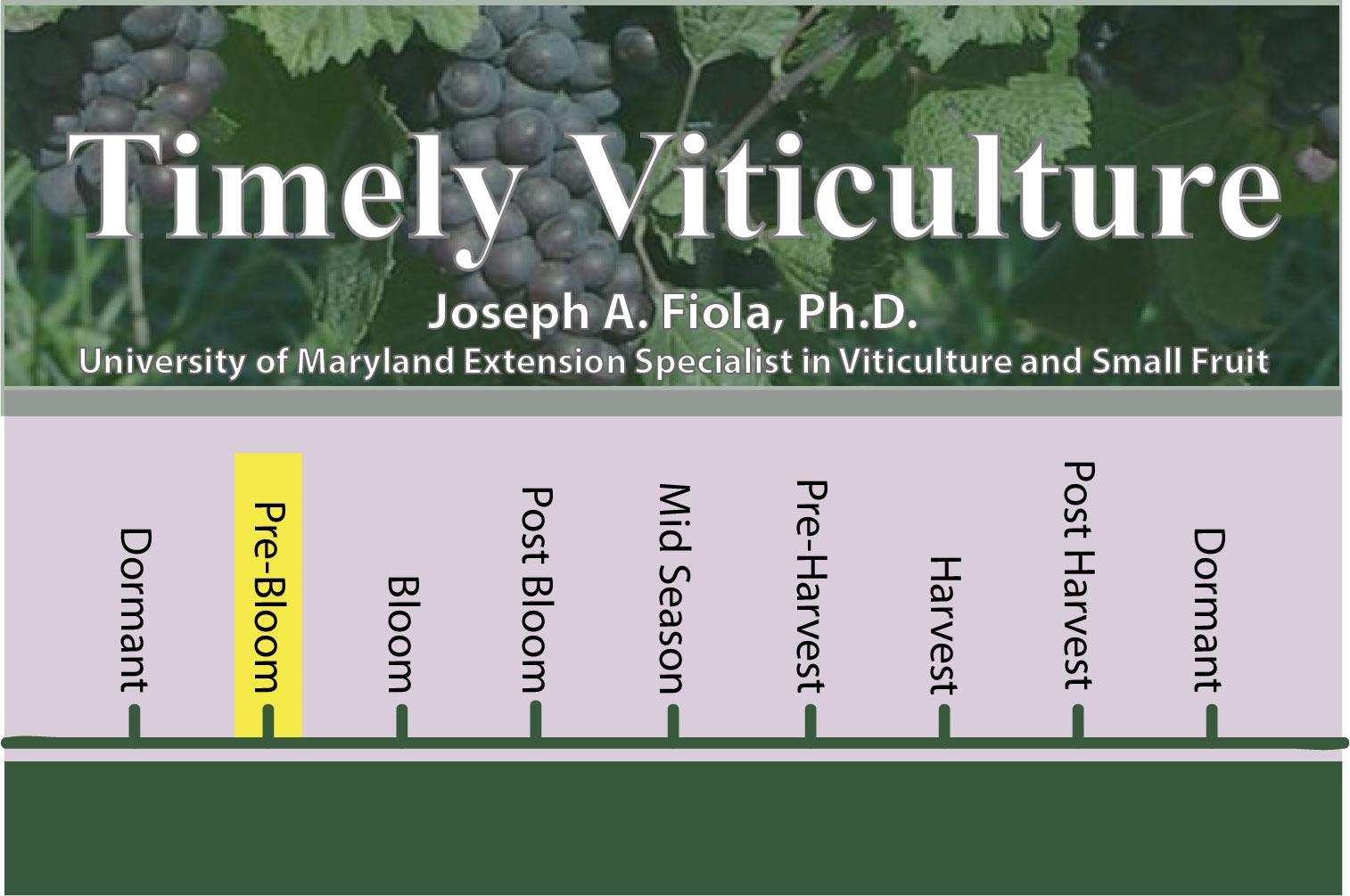Nitrogen Fertilization in the Vineyard
The annual goal in the established vineyard is to have the vines fill their allotted trellis space, top out vegetative growth just above the top wire at veraison, and produce a crop that is in balance with the vegetative vigor. Regretfully high water availability and high nitrogen (N) content of Mid-Atlantic soils typically leads to excess vigor and extended vegetative growth.
- Nitrogen is a major component in proteins and growth regulators (cytokinin and auxins) in plants and therefore is utilized in large quantities.
- Nitrogen is a very dynamic element in the soil and plant. Many of the N compounds are very soluble and are easily taken up by the plant and leached from the soil.
- Nitrogen is supplied naturally in the soil primarily through the breakdown of organic matter. Each 1% of organic content in the soil can supply from 5 to 20 lbs. of N/acre/year, depending on soil series, temperature, etc.
- For many grapevines (especially vinifera cultivars), excessive N may lead to excessive vigor and unbalanced vines. This ultimately leads to reduced fruit quality due to shaded fruit and delayed ripening. Excess N may also decrease fruit firmness and make the berries more susceptible to Botrytis infection.
- Overall, excess vigor is a problem with grapevines, so a conservative approach is typically taken with supplemental N fertilization. On heavy soils or soils with high moisture content apply too much N during the growing season may result in the vine actively growing late into the fall with poorly hardened wood that has increased sensitivity to winter damage.
- Nitrogen requirements are best determined by growth and performance. The grower needs to determine rates of N for each variety for each block of the vineyard. Vinifera and premium Hybrids are managed for moderate yield and maximum fruit and wine quality. Thus N supply is at the lower end of the spectrum.
- Soil tests for nitrogen have not proven useful in determining plant needs, so leaf analysis is the best tool for determining fertilizer needs in bearing vineyards.
- When developing a nutrient management plan, leaf analysis, soil series, and vineyard vigor observations including shoot growth rates (number of hedges/sheerings), leaf color, yield, and pruning weights should all be taken into account.
- For vinifera, N needs and applications should be based on tissue testing in conjunction with observations on vigor and productivity. Typically grafted vinifera vines are very vigorous and do not require annual N applications, with the possible exception of high sand content soils.
- Premium and grafted Hybrids will typically respond similarly to vinifera cultivars and may require little or no annual N fertilizer.
- Self-rooted Hybrids and American cultivars require regular annual applications to maintain vigor and
balance productivity.
- As a guideline, the annual N requirement for vinifera and premium Hybrids ranges between 0-30 lbs. actual N/acre. But as previously stated, most do not require annual applications and many vineyards can go many years without N applications, again depending on soil organic matter and moisture availability.
- For premium Hybrids, annual N requirement ranges between 0- 50 lbs. actual N/acre, with the same considerations as for vinifera above.
- Self rooted Hybrids and Americans may require 20-60 lbs./acres annually.
- Most N (75%) is stored in the roots of dormant vines and early spring vine growth of the vine is primarily fueled by the reserve N stored in the roots, trunks, and other permanent wood; this typically runs out around bloom.
- Most N uptake by the vine occurs at 2 periods: 2-3 weeks prior to bloom and 2-6 weeks after bloom. Vines take up only 10% of N applied at bud break, but double the rate of N uptake near bloom. Thus, it is not recommended to apply N at bud break, but preferably around full bloom, in late May or early June.
- A second application, if necessary, can be made no later than mid-July if the growth of the vines has slowed or stopped by that point or the leaves look light or chlorotic.
- Vineyards on sandy soils typically require more N during the growing season, and depending on the soil organic matter content, it is best to split the applications.
- Fertigation, if possible, is the desired and most efficient mode of application as it concentrates the N in the root zone. Apply small amounts (1-3 lbs. actual N) as needed.
- Dry fertilizer is typically banded under the row to feed the grapevines and not the turf middles.
- MDA requires all commercial farms to have a nutrient management plan. Send tissue and soil sample results to a Nutrient Management Advisor at UME, and we will take all information into consideration in preparing the recommendations in your nutrient management plan.
N content of fertilizers
- Ammonium nitrate contains 32% N and has an acidic soil reaction (1 lb. N = 1.8 lbs. CaCO₃). It takes 1.8 lbs. of lime to neutralize the acidic reaction of 1 lbs. of ammonium nitrate fertilizer. It may be difficult to obtain due to its explosive nature.
- Urea contains 46% N. It is an economical N source, also with an acidic soil reaction (1 lb. N = 1.8 lbs. CaCO₃). It is subject to ammonia volatilization if not incorporated.
- Calcium Nitrate contains 15% N, and is more expensive, but is an excellent source for fruit since it also supplies calcium which is important for fruit. It has a basic soil reaction so no neutralization is needed.
Resources
- Dr. Terry Bates Cornell University
- Dr. Tony Wolf, Virginia Tech
- Dr. Tim Martinson, Cornell University
- Visit University of Maryland Extension Grapes and Fruit Program
Timely Viticulture is designed to give those in the Maryland grape industry a timely reminder on procedures or topics they should be considering in the vineyard.
